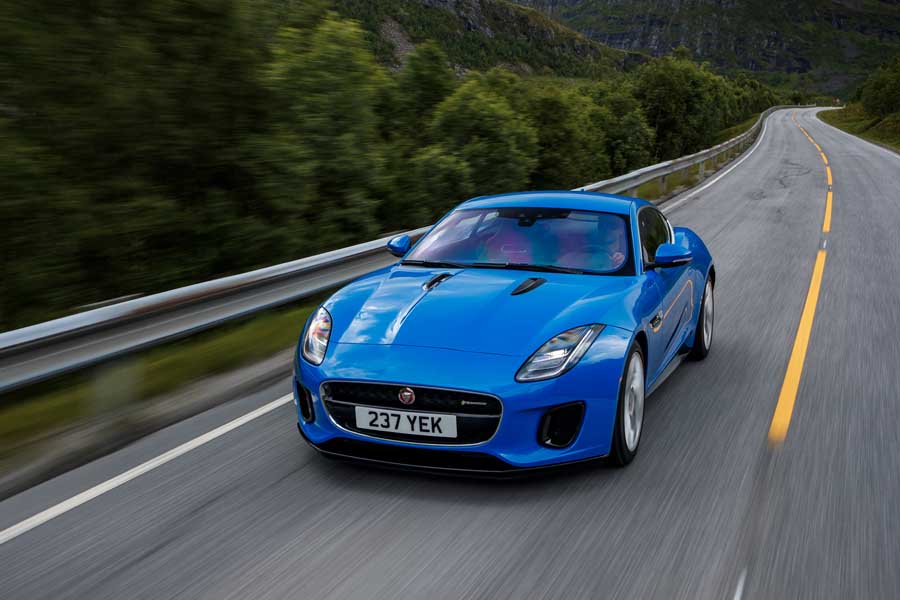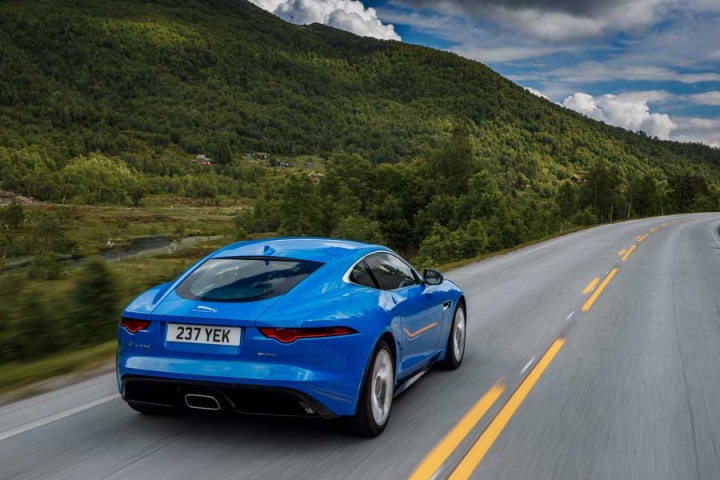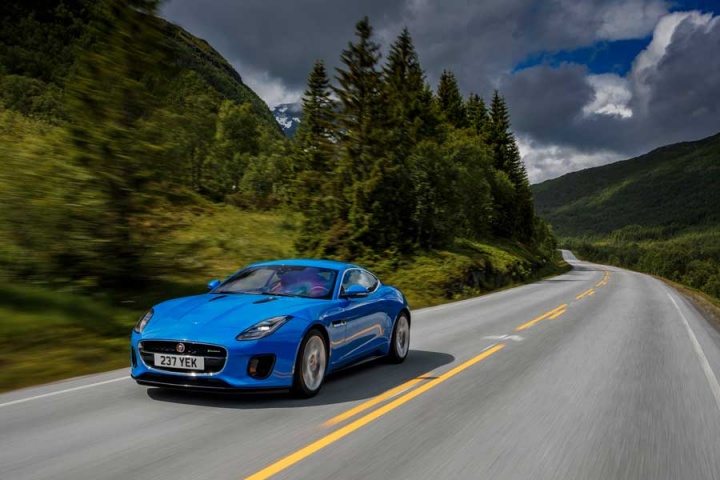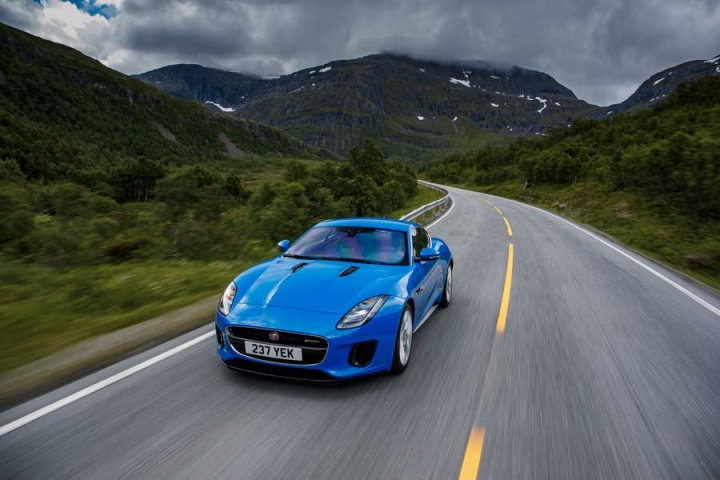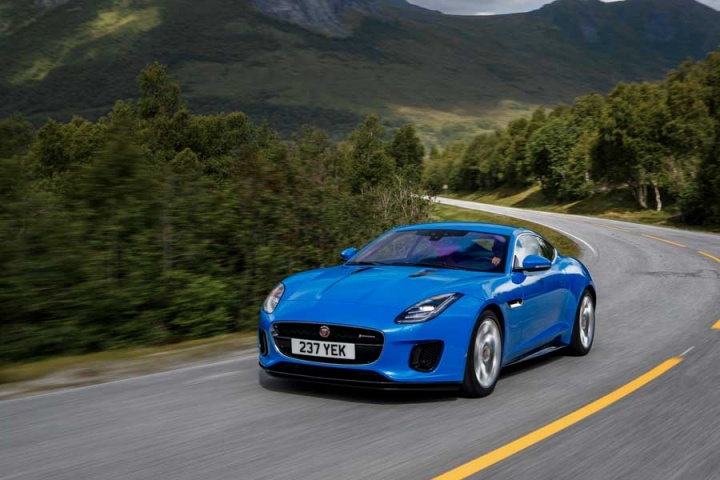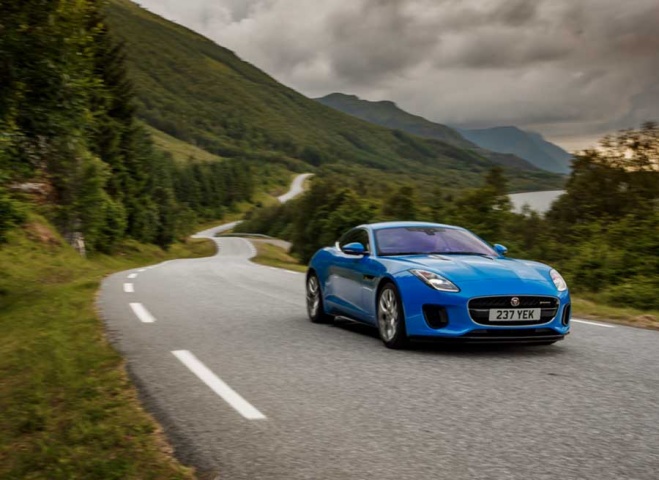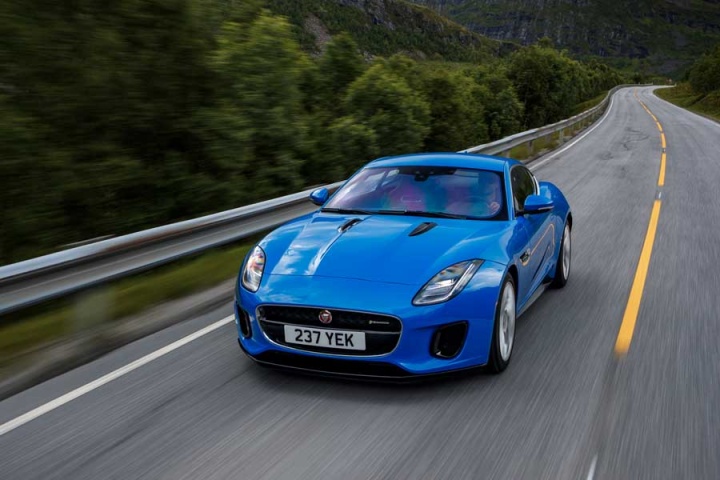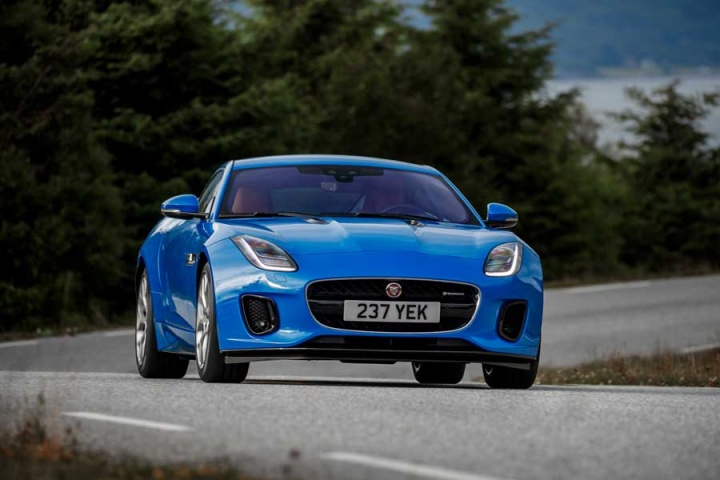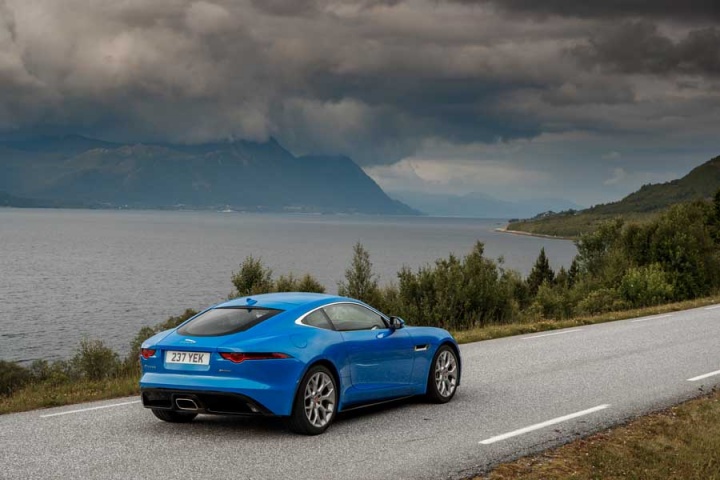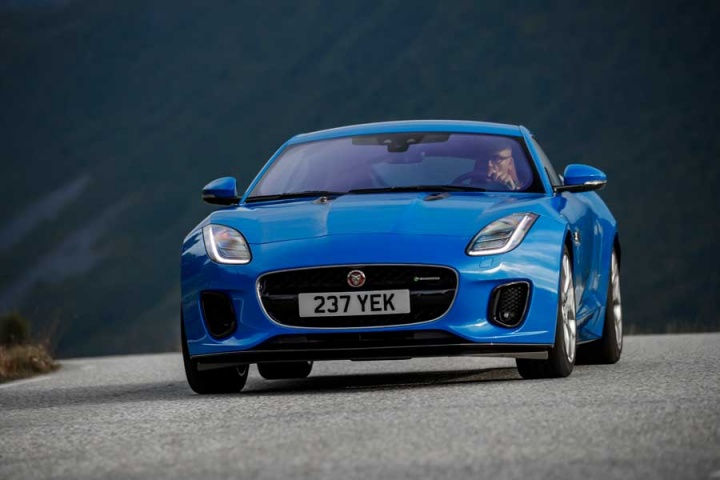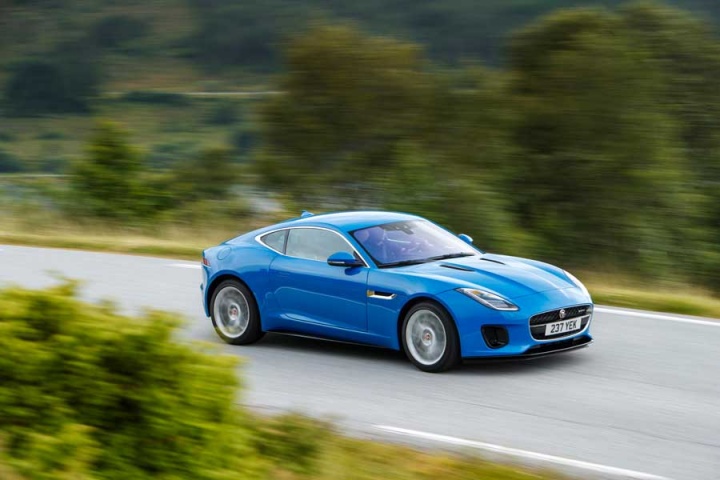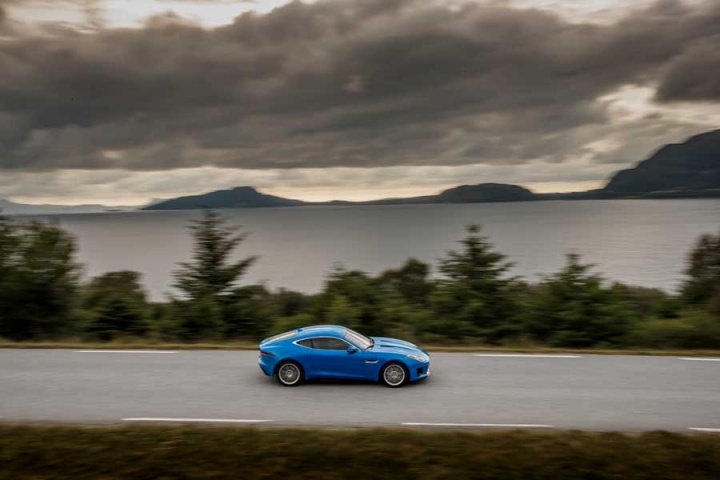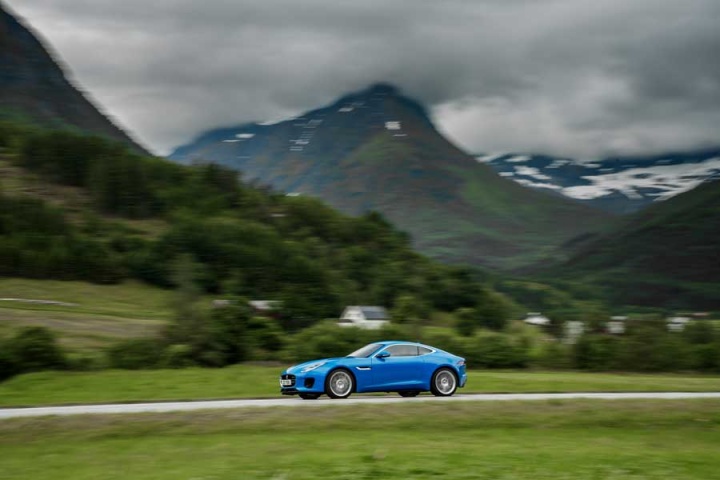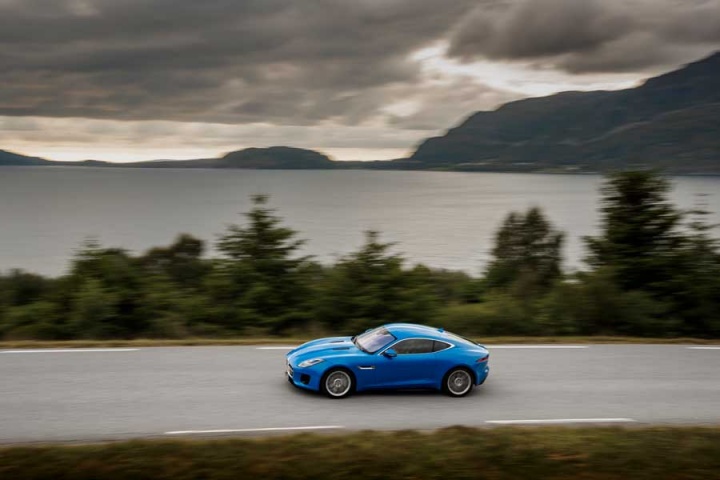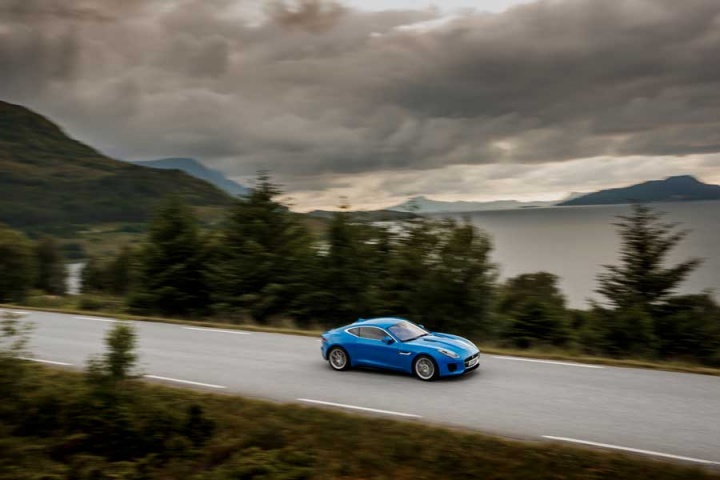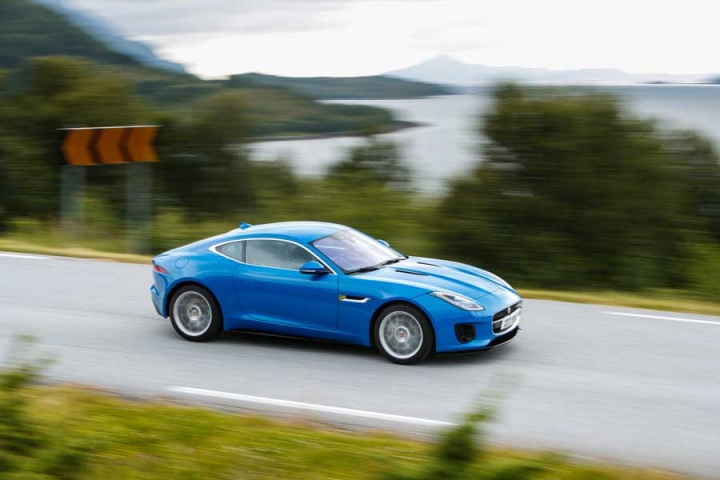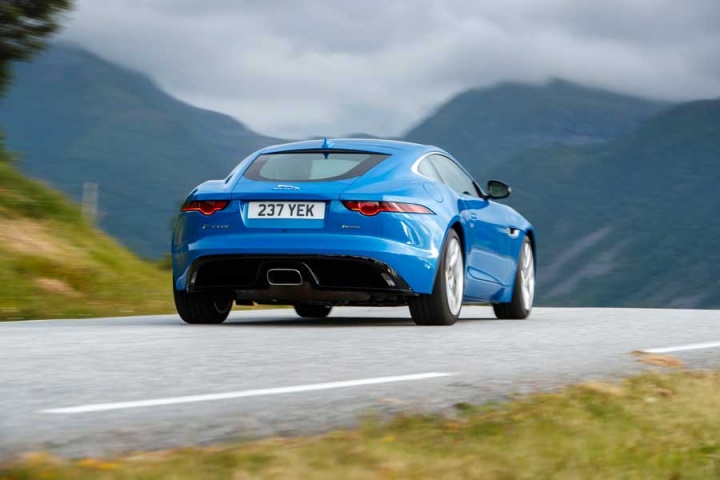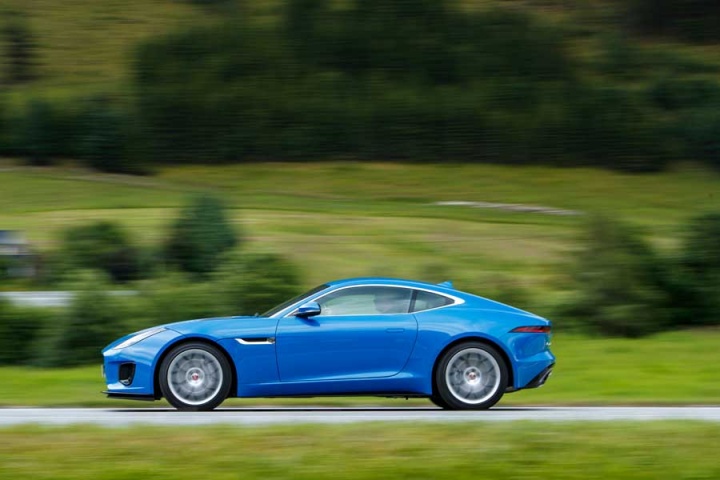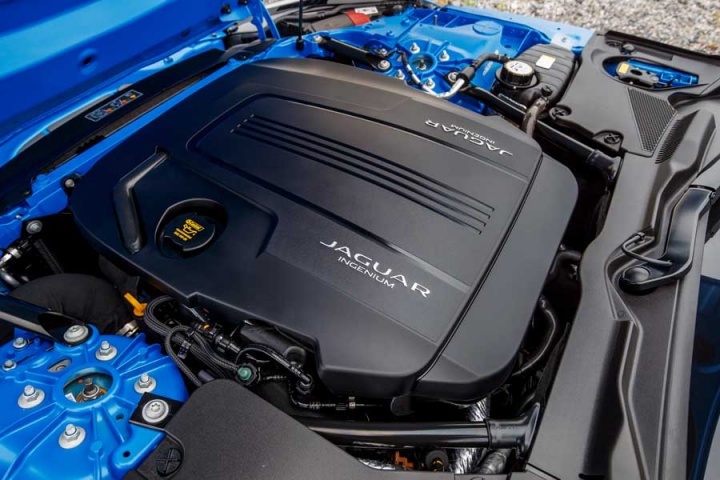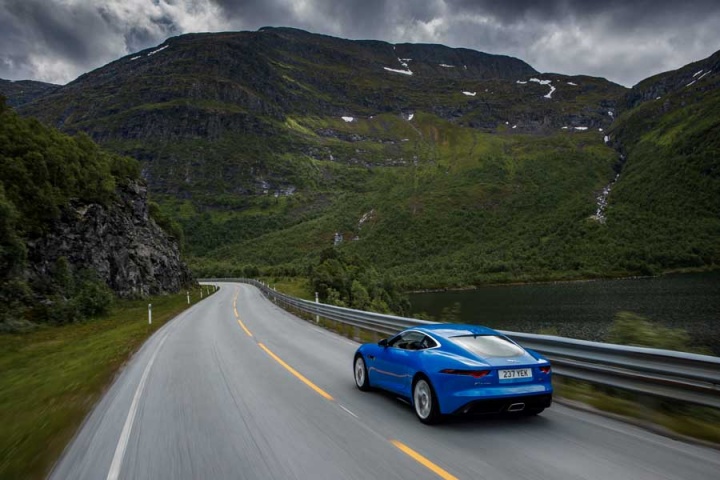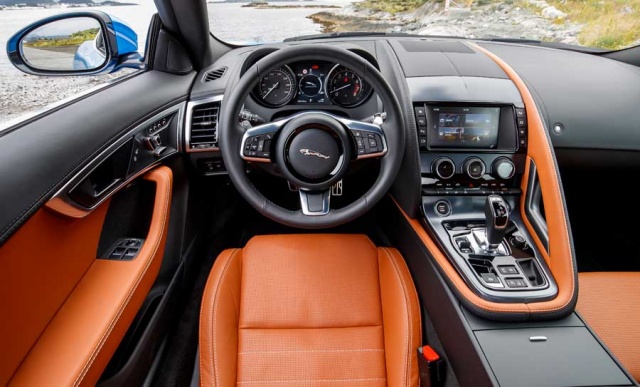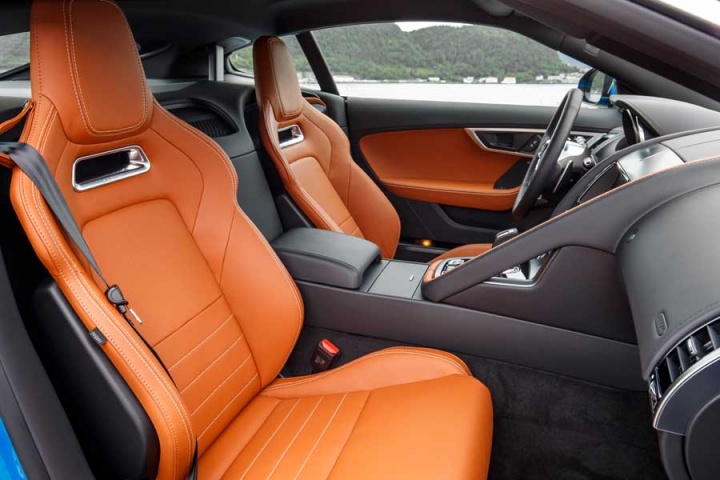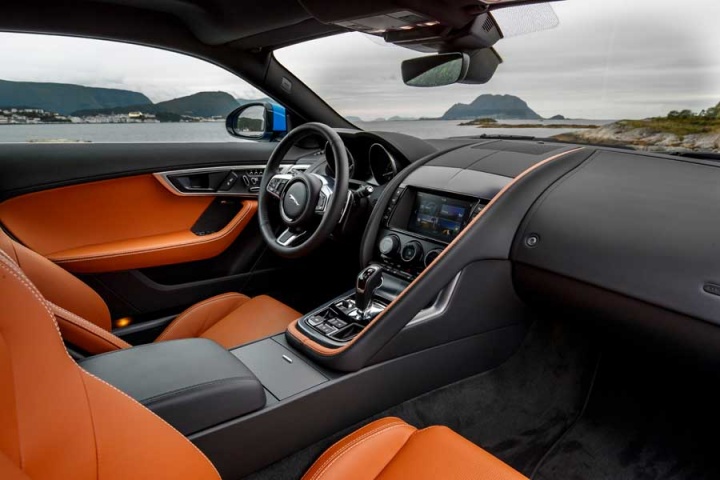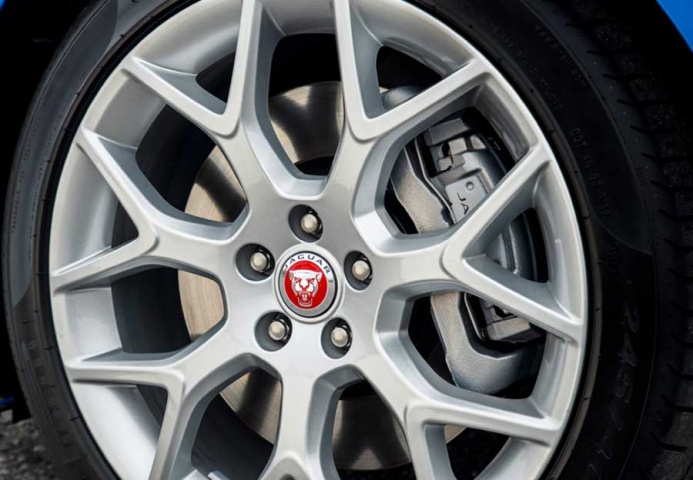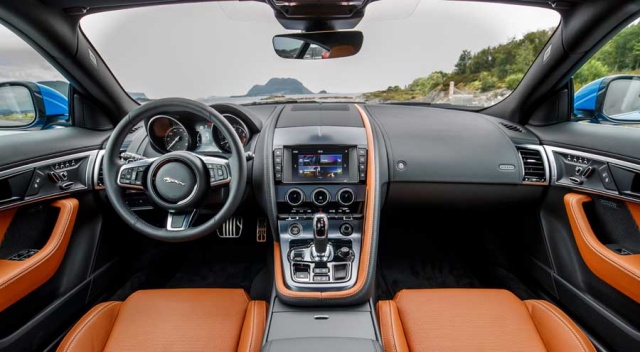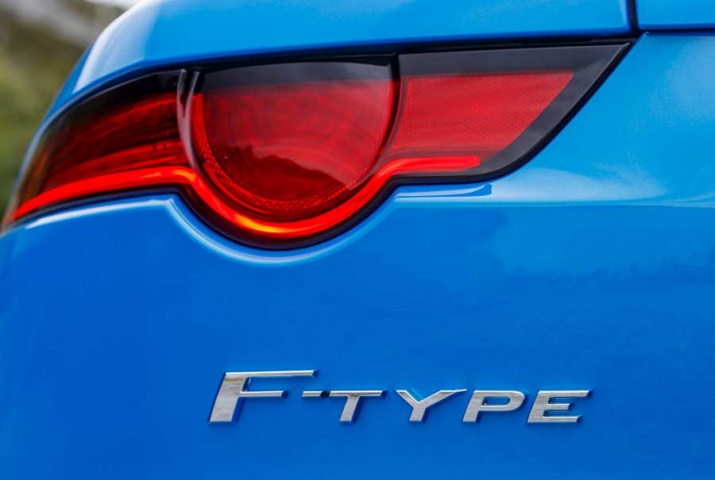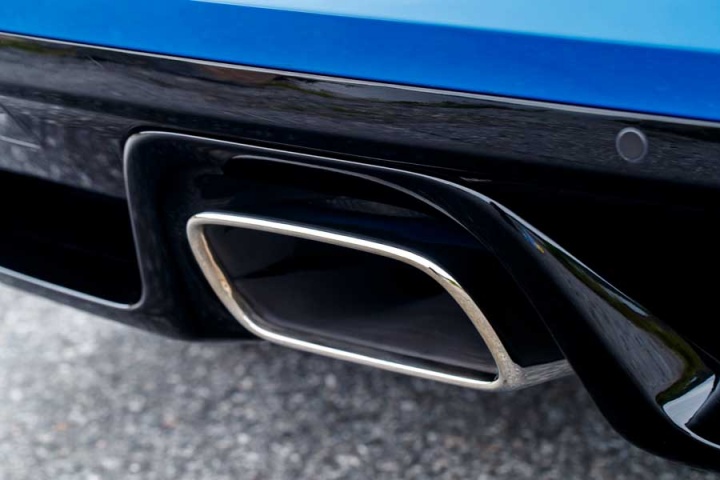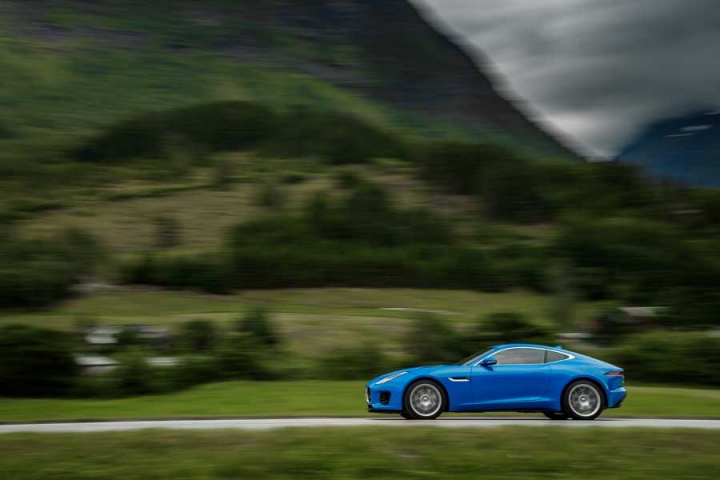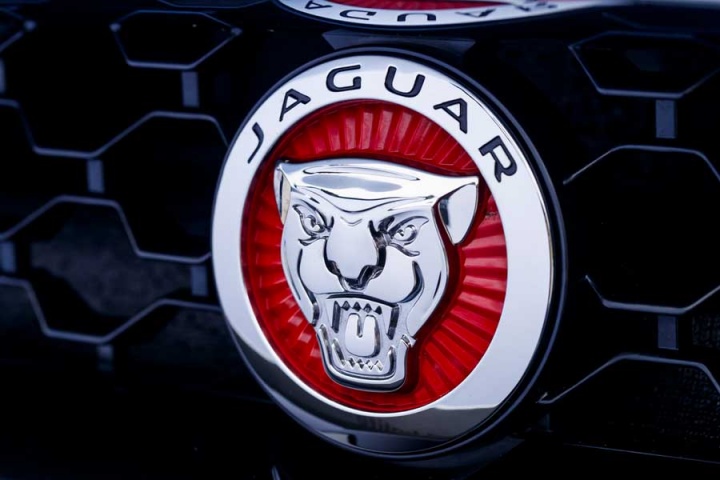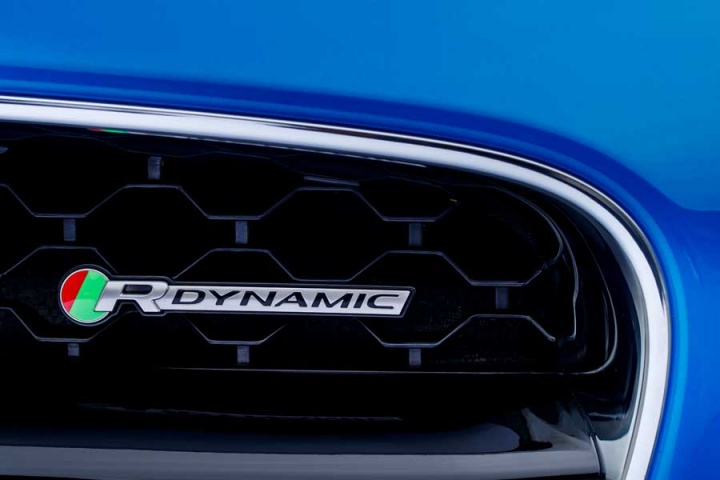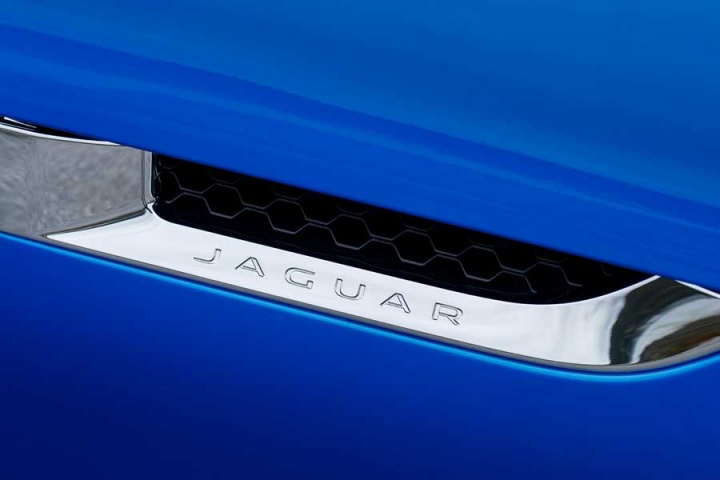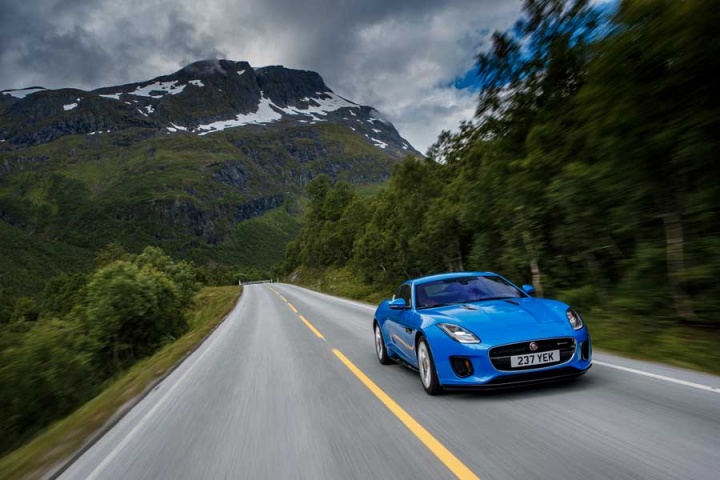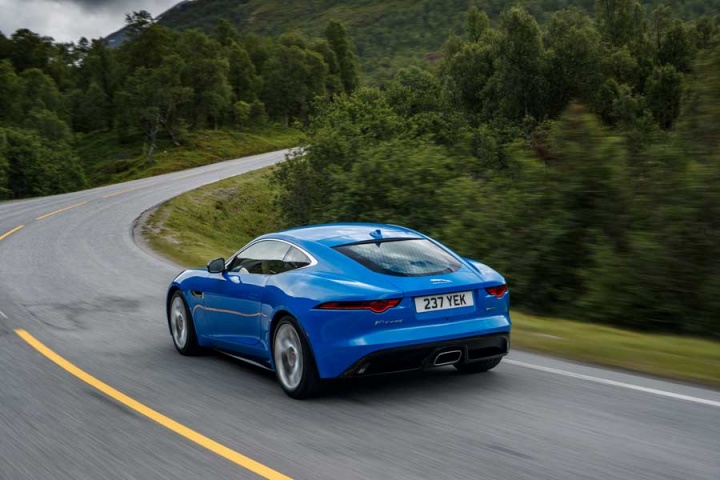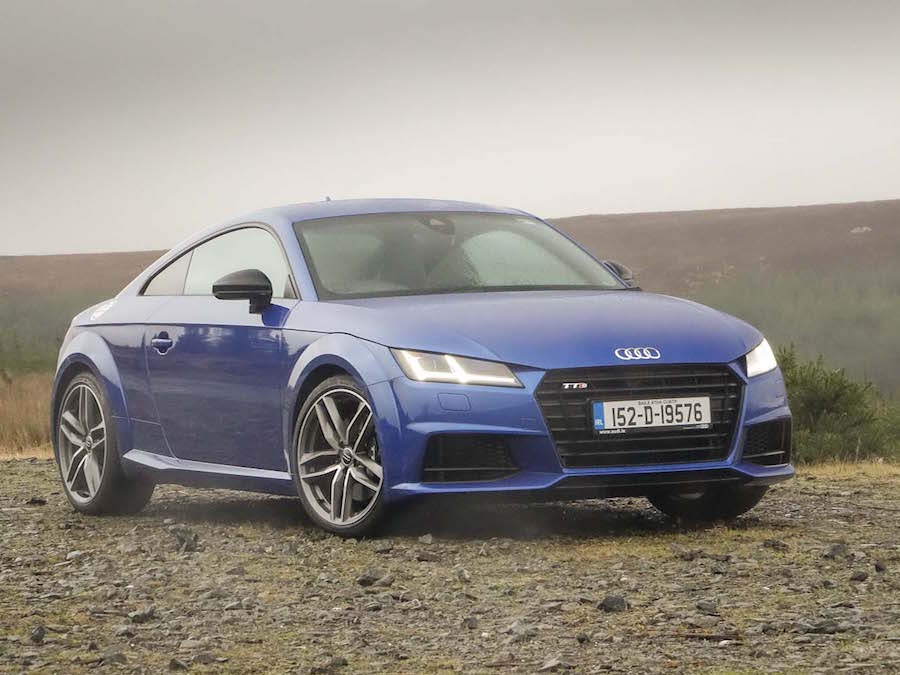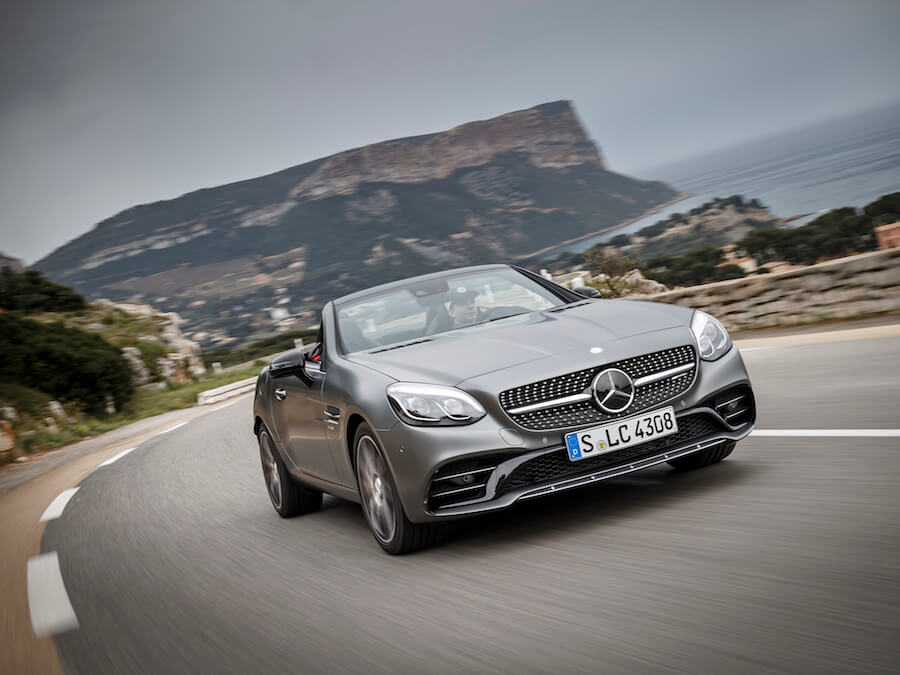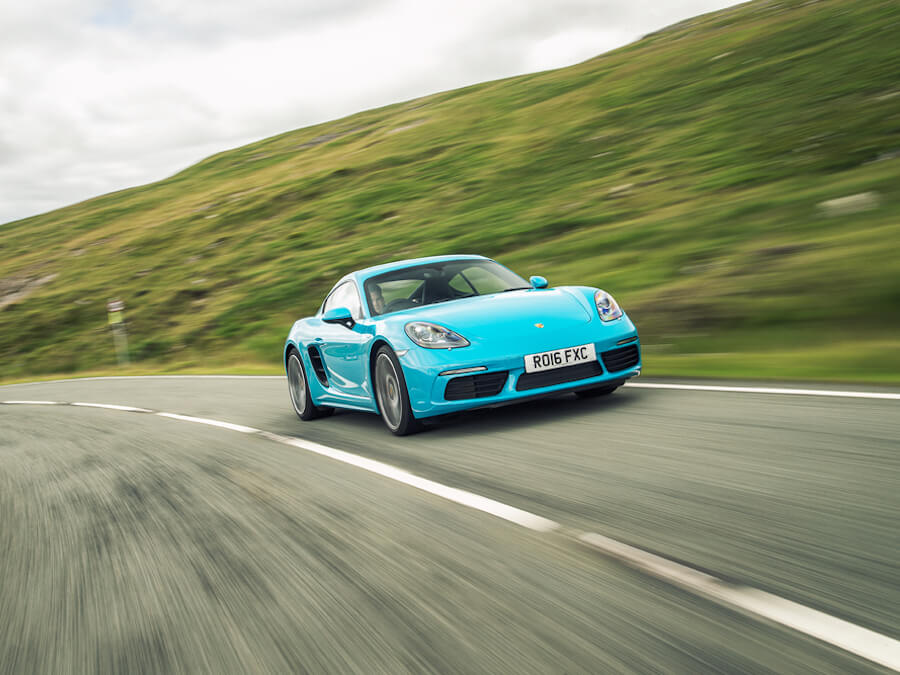Fewer cylinders does not mean a lesser F-Type. The new 300hp four-cylinder turbo is a cracking engine and the F-Type remains great to drive and the new price is seriously tempting.
In the metal
Not very much has changed on the exterior of the Jaguar F-Type to signify the arrival of the four-cylinder turbocharged 'Ingenium' petrol engine. There is no special badging, nor different body panels. In fact, the only visual alterations are a single, trapezoidal exhaust pipe in the centre of the rear bumper, in place of the twin pipes of the V6 and V8 versions, and slightly different 18-inch alloy wheels.
Standing waiting in a mountainside car park in Norway, our 'Ultra Blue' painted coupe looked little short of fantastic, and the contrasting biscuit brown upholstery on the inside looked rather tasty. The cabin has also changed but little - there is an updated Touch Pro infotainment system, and some revised seats that are a little less bulky and which liberate a little more legroom than before. The F-Type remains snug inside, though, and the boot is still pretty small (albeit better in this fastback coupe than you'll find in the too-tight roadster) at 310 litres. Enough for some squashy bags, but if this is your holiday transport, pack light.
Jaguar has bumped up the F-Type's safety credentials though. There's a new stereo camera peering out from the top of the windscreen, which controls the autonomous emergency braking system, as well as the new lane-keeping assistant, which nudges the chunky three-spoke steering wheel should it detect you're swerving out of your lane. There's also a driver attention monitor, so this continent-crossing coupe is now much safer for those long continental miles.
Of course, the big news is that it's now packing a four-cylinder engine. Jaguar has, out of necessity and out of competitive instinct, decided to trim the F-Type's cylinder count to match that of the Porsche 718 Cayman and 718 Boxster for power output, and, within a gram or two, match it for emissions too. It's done this by swapping out the existing V6 and V8 powerplants for a new 'Ingenium' 2.0-litre four-cylinder turbo. Smaller in displacement and cylinder count it may be, but this engine is packing some serious tech, including low-friction ceramic bearings, a high-pressure direct fuel injection system and an electro-hydraulic camshaft setup that can almost infinitely vary the intake and exhaust timing, for greater efficiency and more power. The upshot is very healthy figures of 300hp, 400Nm of torque, and 163g/km of CO2. The biggest beneficiary is the price, though. Thanks to the drop in emissions compared to the V6 model, the four-pot F-Type gets a nearly €30,000 price haircut (no, that's not a typo) and plunges right into the price mix with the twin Porsches. While that won't suddenly turn it into a big seller in the Irish car market, it does make F-Type ownership far more attainable for many of us, and that's only to be applauded.
Driving it
The first hurdle the F-Type must jump is noise. Porsche found itself being repeatedly beaten over the head by marque purists and generally grumpy people when it introduced its flat-four 2.0-litre turbo in the 718 Cayman and Boxster. The whingeratti declaimed it for being not noisy enough, not musical enough and basically not as good as the old flat-six, ignoring (it would seem) the clever mix of vastly more power and vastly improved economy and emissions.
Will the F-Type four-cylinder suffer a similar fate? Well, probably - after all, a 2.0-litre four-banger is never going to have the bombastic, fantastique soundtrack of the V6 and V8 versions, so doubtless Twitter will shortly be alive with the sound of moaning over the 2.0-litre F-Type's soundtrack. Jaguar has attempted to head at least some of that off at the pass by tuning the engine's intake and exhaust noise to try and get as close as possible to the six-pot's soundtrack, and for the most part, it has been successful. Accelerate hard and the Ingenium engine responds with a pleasingly gruff bellow, with just a hint of exhaust rasp as you approach the top end. Back off, or pull the up change paddle in the (standard-fit) eight-speed automatic 'Quickshift' gearbox and you'll be rewarded with a delightful spit and burble from the exhaust as unburned fuel is dumped onto hot steel. No, it's not the full Boston Pops Orchestra soundtrack of the bigger engines, but how could it be? For a four-pot, it's more than decently musical.
More than decently fast too. Norway's tightly restricted speed limits meant that our high-speed forays were rather limited, but the F-Type 2.0-litre still shifts pretty well. Outright performance is realistically no better than that of, say, a Volkswagen Golf R, and a Honda Civic Type-R would give it more than a few headaches, but for the sane amongst us, the 300hp F-Type is more than sufficiently brisk, and the low-set driving position, coupled with the somewhat Freudian rise and fall of that long, long bonnet means that, from the driver's seat, it feels faster than it actually is.
Thanks to the cylinder dearth, the four-pot F-Type is actually 52kg lighter than the V6 model, and almost all of that reduction has come from the nose. Jaguar's engineers have taken the opportunity to rework both the suspension (new spring rates, retuned dampers) and the steering (new calibration) to suit, and they claim that the four-cylinder F-Type is actually more agile than the V6 or V8. It probably is, but equally probably you'd need to drive both back to back on identical tarmac to discern that. The good news is that the four-cylinder feels basically identical to the V6 in its handling and ride. Which is to say it's excellent. The light power steering has decent feel, very good reaction speeds and guides that elongated snout sharply into a chosen apex. The engine may lack the excess power that makes other F-Types such natural drifters, but on damp, unfamiliar tarmac that's possibly no bad thing, and it remained planted and forgiving in all conditions as we drove through both scuttling showers and bright sunshine. The ride quality is also very good, so if you back off and cruise, you'll find that the F-Type is a very comfortable long-haul car, thanks also to those seats and the lack of engine noise when you're not pressing on. Plus, the engine's official 39mpg fuel economy means you'll probably beat a V6 model across country thanks to making fewer fuel stops.
What you get for your money
In some ways it's a touch perverse to refer to a car costing €65,000 (final price to be confirmed) as a bargain, but that's exactly what the four-cylinder F-Type is. Thanks to its more sensible emissions, and the ins and outs of Vehicle Registration Tax (VRT), the four-cylinder model really is nearly €30,000 more affordable than the cheapest V6 model. That means you could buy this car, and a well-specced SEAT Ateca for family duties, for the price of one 340hp V6 F-Type, and you'd only be sacrificing 40hp. Sounds like a proper bargain to us. All models come with 18-inch wheels, automatic gearbox, active sports exhaust, Xenon headlights, sports seats in a mix of leather and suedecloth, satnav and a pumping Meridian sound system.
Summary
Even leaving aside the €30k price drop, the four-cylinder Jaguar F-Type would be a terrific car. Conceptually and mechanically, it's now the car it should have been at launch - a close rival to the Porsche Cayman and Boxster - and considering that it matches the performance of those cars, I think it's fair to say that the F-Type looks and feels rather more desirable. One of the best-looking cars in the world just became more affordable, more economical, more environmentally friendly and it's still great to drive. Who needs six cylinders?

